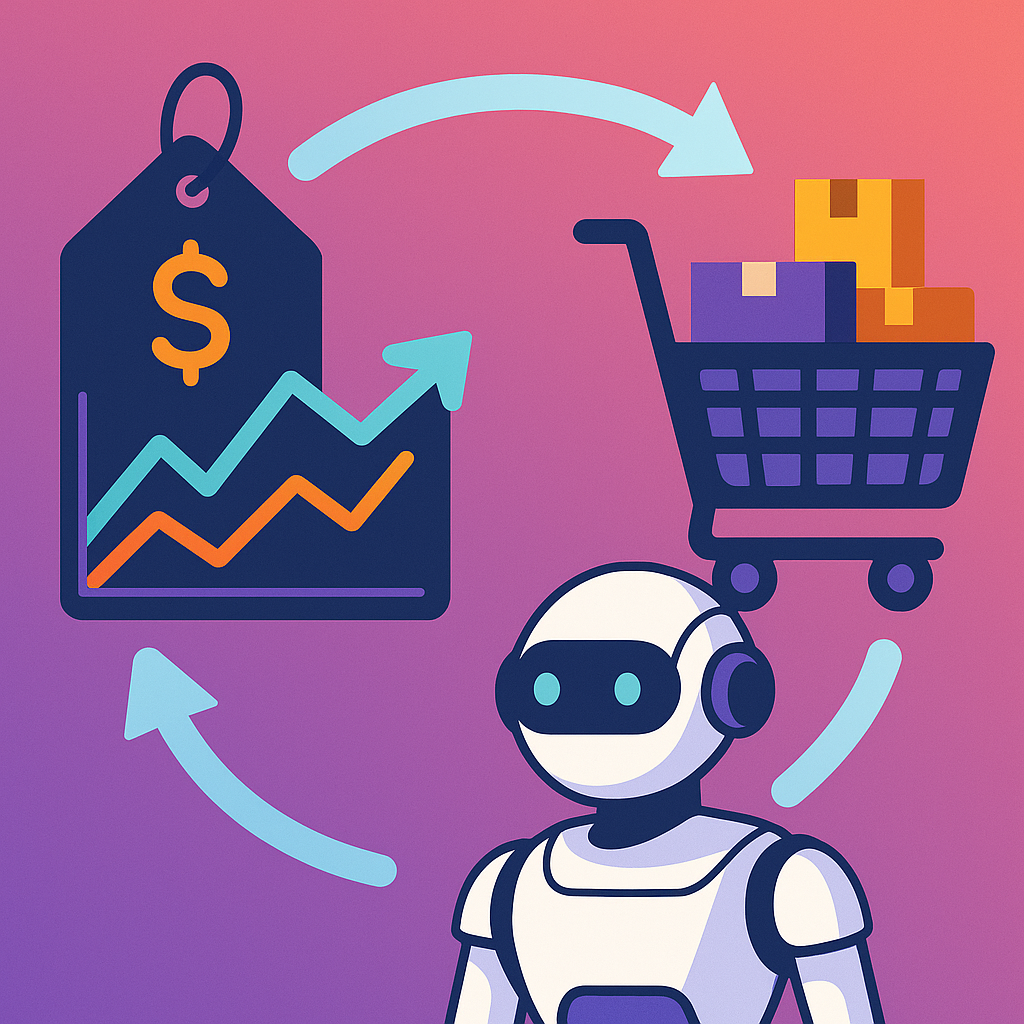Adapting Dynamic Pricing Strategies for Interactions with Price-Comparing AI Agents
As AI shopping agents drive instant price comparisons, businesses must evolve dynamic pricing strategies to stay competitive, avoid margin erosion, and prepare for future AI-to-AI negotiations.

Personal AI shopping agents are often programmed to find the best deals and compare prices across platforms. This introduces a significant challenge for e-commerce businesses employing dynamic pricing strategies. How can businesses adapt their pricing tools and strategies to effectively interact with AI agents specifically designed for price comparison, potentially leading to AI-to-AI price negotiation scenarios?
Dynamic pricing allows businesses to adjust prices in real-time based on factors like demand, inventory levels, competitor pricing, and customer behavior. This is often driven by AI and data analysis. However, the presence of AI agents constantly comparing prices adds a new dynamic. An agent might be programmed to instantly switch to a competitor if a lower price is found, creating rapid price sensitivity.
Challenges and considerations for dynamic pricing with AI agents:
Instantaneous Price Comparison:
AI agents can compare prices across numerous sites almost instantaneously. This means price changes need to be equally responsive to remain competitive for agent-driven traffic.
Race to the Bottom:
If dynamic pricing engines are primarily reacting to competitor AI agents, it could potentially lead to a rapid "race to the bottom" on pricing, squeezing margins.
Agent Programming:
The specific programming of an AI agent matters. Some agents might be strictly price-focused, while others might consider factors like shipping cost, delivery time, or return policies. Dynamic pricing might need to account for these other variables.
AI-to-AI Negotiation:
In the future, we might see AI agents from businesses and customers engaging in automated price negotiation, where the business's dynamic pricing system interacts directly with the customer agent's bidding logic.
Adapting dynamic pricing strategies involves:
Real-Time Competitive Analysis Powered by AI:
Leveraging AI to not only monitor competitor prices in real-time but also identify activity patterns that might indicate the presence of AI price comparers.
Sophisticated Pricing Algorithms:
Developing dynamic pricing algorithms that can react rapidly to market changes driven by AI agents while also considering business objectives like margin protection and inventory levels.
Value-Based Pricing for Agents:
While agents compare price, the human user they represent seeks overall value. Dynamic pricing strategies could emphasize value beyond just the list price, highlighting fast shipping (if an agent is programmed for speed) or bundled offers that might appeal to the agent's logic.
Experimentation and Learning:
Since the interaction with AI agents is new, dynamic pricing strategies will require continuous experimentation and learning to understand how different pricing approaches affect conversion rates with agent traffic. AI can automate A/B testing of different pricing strategies.
Agent Compatibility:
Ensuring that dynamic pricing information is presented in a structured, machine-readable format that AI agents can easily parse and utilize.
Successfully navigating dynamic pricing in the age of AI agents requires sophisticated AI tools capable of real-time analysis and flexible pricing adjustments. It's about leveraging AI to stay competitive, understand agent behavior, and potentially engage in automated pricing interactions to secure transactions from this emerging customer segment.